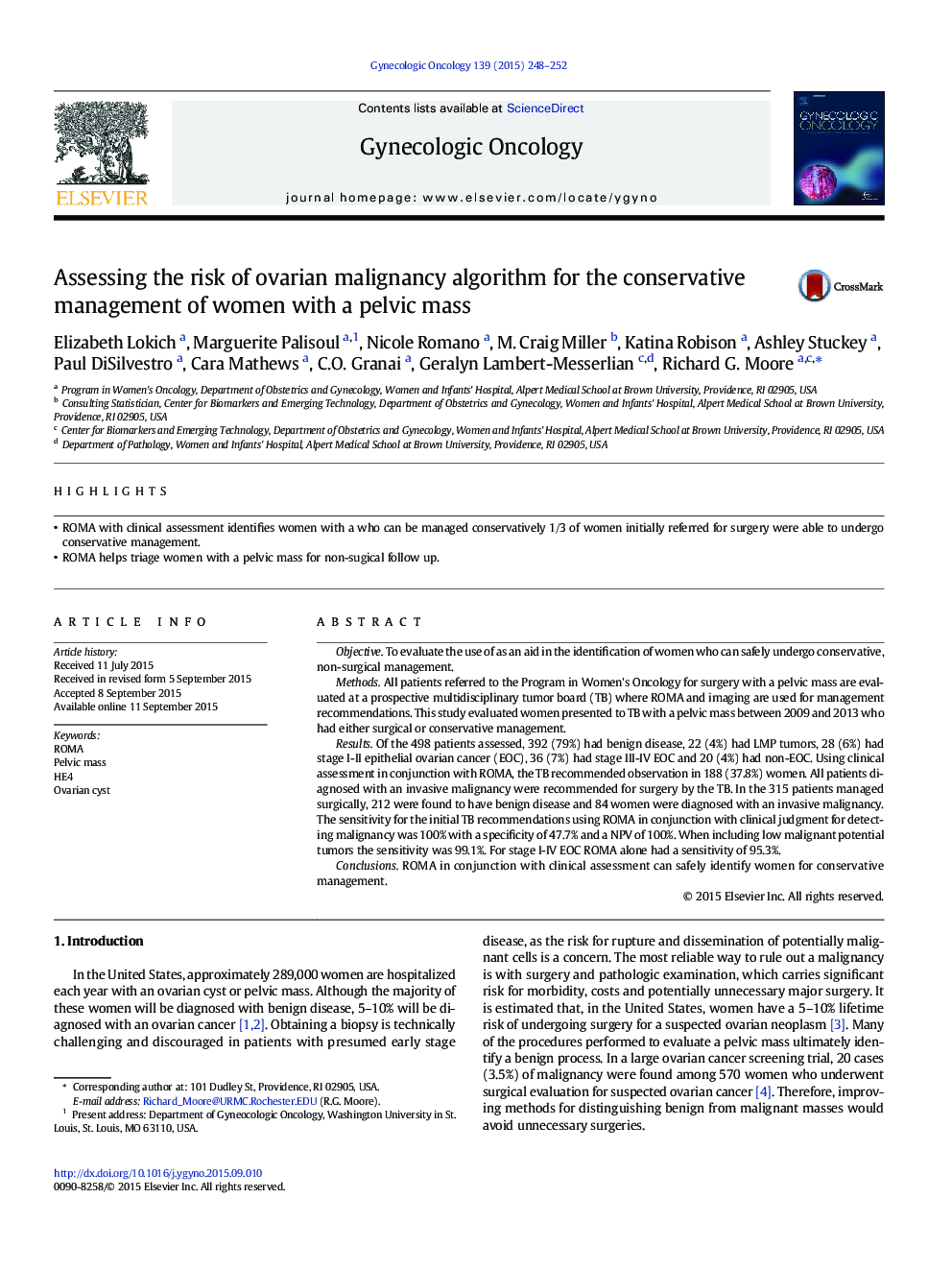| Article ID | Journal | Published Year | Pages | File Type |
|---|---|---|---|---|
| 3943053 | Gynecologic Oncology | 2015 | 5 Pages |
•ROMA with clinical assessment identifies women with a who can be managed conservatively 1/3 of women initially referred for surgery were able to undergo conservative management.•ROMA helps triage women with a pelvic mass for non-sugical follow up.
ObjectiveTo evaluate the use of as an aid in the identification of women who can safely undergo conservative, non-surgical management.MethodsAll patients referred to the Program in Women's Oncology for surgery with a pelvic mass are evaluated at a prospective multidisciplinary tumor board (TB) where ROMA and imaging are used for management recommendations. This study evaluated women presented to TB with a pelvic mass between 2009 and 2013 who had either surgical or conservative management.ResultsOf the 498 patients assessed, 392 (79%) had benign disease, 22 (4%) had LMP tumors, 28 (6%) had stage I-II epithelial ovarian cancer (EOC), 36 (7%) had stage III-IV EOC and 20 (4%) had non-EOC. Using clinical assessment in conjunction with ROMA, the TB recommended observation in 188 (37.8%) women. All patients diagnosed with an invasive malignancy were recommended for surgery by the TB. In the 315 patients managed surgically, 212 were found to have benign disease and 84 women were diagnosed with an invasive malignancy. The sensitivity for the initial TB recommendations using ROMA in conjunction with clinical judgment for detecting malignancy was 100% with a specificity of 47.7% and a NPV of 100%. When including low malignant potential tumors the sensitivity was 99.1%. For stage I-IV EOC ROMA alone had a sensitivity of 95.3%.ConclusionsROMA in conjunction with clinical assessment can safely identify women for conservative management.
